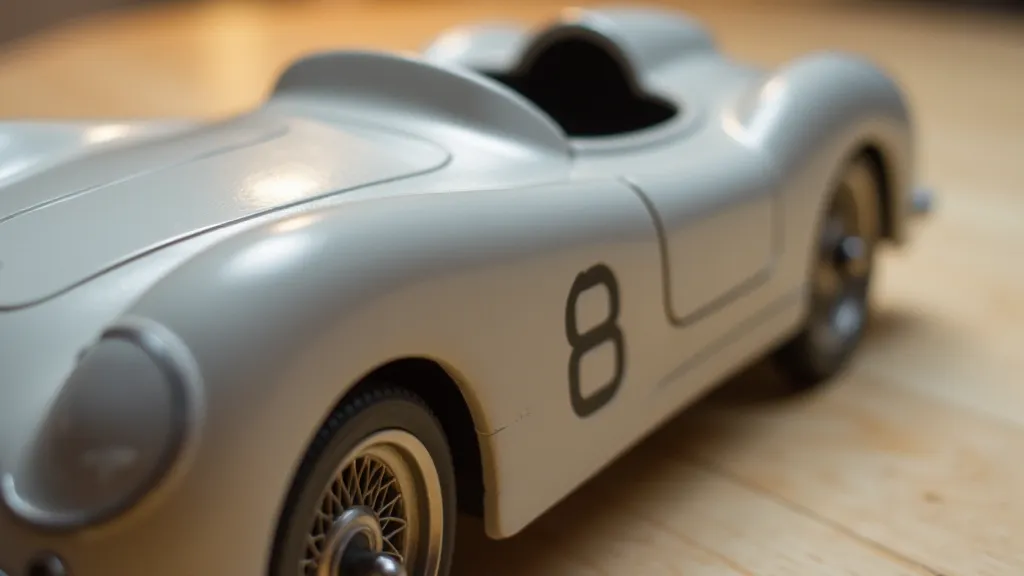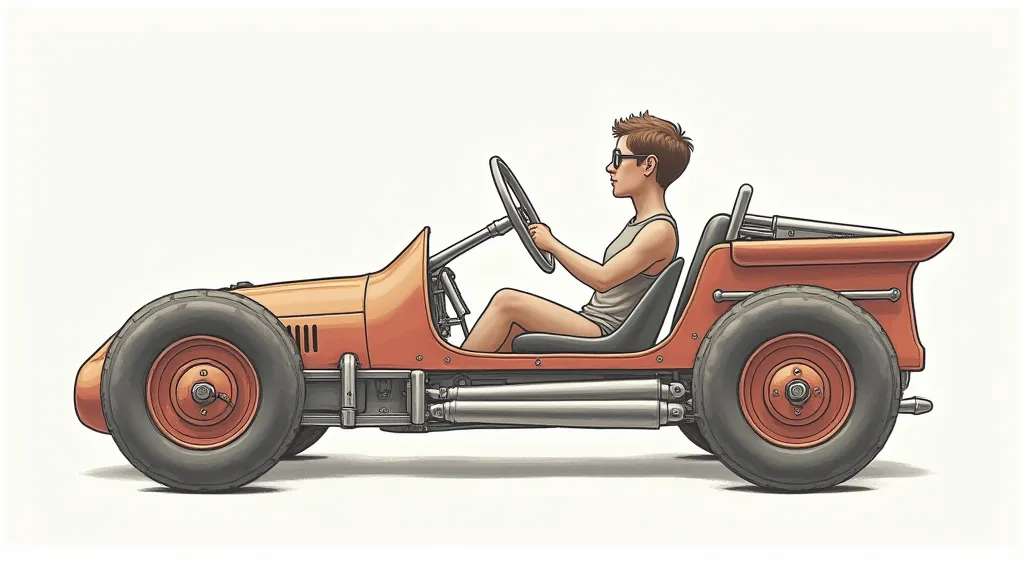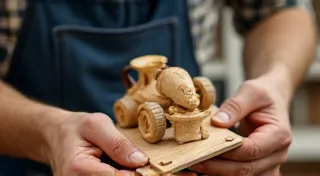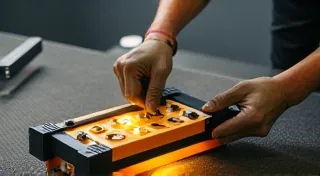Advanced Soap Box Car Design Techniques
Dive deeper into advanced design principles to optimize your soap box car's performance.
Building a soap box car is a fantastic project for kids and adults alike, fostering creativity, problem-solving, and a love for engineering. While basic construction is accessible to most, maximizing your car's speed and handling requires a grasp of more advanced design techniques. This article explores these principles, going beyond the basics to help you build a truly competitive racer.
Before diving into the specifics, remember that a strong foundation is critical. If you're new to soap box car building, exploring basic frame construction can be very beneficial. You can find excellent step-by-step instructions on building a robust frame over at Soap Box Car Frame Construction: Step-by-Step Instructions.
Understanding Aerodynamics - Minimizing Drag
Aerodynamic drag is the biggest hurdle to speed in soap box car racing. It's the resistance the air creates as your car moves through it. Reducing this drag requires careful attention to several factors.
Body Shape: A streamlined, teardrop shape is ideal. Avoid flat surfaces and sharp edges, as these create turbulence. Think about how a race car or airplane is shaped – you’re aiming for a similar profile. The car’s cross-sectional area should be as small as possible without compromising stability. The lower the car, the less frontal area is presented to the wind, but you need to maintain adequate ground clearance.
Fairings & Spoilers: Fairings – smooth, streamlined coverings – can be used to conceal less aerodynamic components like the driver's legs or steering mechanism. While spoilers and wings are often associated with fast cars, their use in soap box car racing is complex. A well-designed spoiler can generate downforce, improving grip and stability at higher speeds, but improperly designed spoilers can create significant drag. Experimentation is key.
Surface Finish: A smooth surface minimizes friction with the air. Polishing the bodywork to a high gloss can reduce drag slightly, but the primary benefit is aesthetics. Ensuring a seamless, gap-free body is more important than a mirror shine.

Weight Distribution and Center of Gravity
Proper weight distribution is vital for stability and responsiveness. The ideal weight distribution places the car's center of gravity (CG) low and slightly forward of the driver. This maximizes traction and minimizes the tendency to tip.
Low CG: Position heavy components – the chassis, steering mechanism, and any ballasts – as low as possible within the car’s frame. Careful consideration of the materials used and their placement is key to achieving this. Often, this involves strategic reinforcement of critical points on the chassis. This is an area that often benefits from careful planning, which can sometimes be part of a larger team project for schools, as described in Soap Box Car Building for Schools: A Team Project.
Forward Bias: A slightly forward CG generally improves stability on descents and minimizes steering adjustments needed to maintain a straight line. Experiment with ballast placement to fine-tune the balance. Too far forward, and the car will nose-dive; too far back, and it will be unstable.
Steering Geometry - Responsive and Predictable Handling
A well-designed steering system is not just about turning the wheels; it's about how that steering feels and responds. A responsive steering system can make a world of difference in overall performance and driver control.
Ackermann Angle: This is a critical but complex concept. In simple terms, it refers to the difference in angle between the inside and outside wheels during a turn. Proper Ackermann angle ensures that the inside wheel turns more sharply than the outside wheel, preventing tire scrubbing and improving turning radius. While calculating the precise Ackermann angle can be challenging, observing how the car handles during turns and making adjustments based on that observation is key. Understanding the mechanics behind a solid steering implementation can be complex, and often involves using specialized tools.
Steering Ratio: The ratio between the driver's steering wheel movement and the wheels' turning angle directly affects the car's responsiveness. A lower ratio means smaller steering wheel movements result in larger wheel turns, making the car feel more nimble. However, too low a ratio can make the steering feel twitchy and difficult to control. Consider exploring the nuances of steering mechanisms in greater detail - Soap Box Car Steering Mechanisms: Design and Implementation provides more comprehensive coverage.

Chassis Stiffness and Construction
A flexible chassis absorbs energy and reduces efficiency. A stiff chassis transmits every input from the driver directly to the wheels, resulting in better control and faster acceleration.
Material Selection: Use strong, lightweight materials like aluminum or steel tubing. Triangular bracing is incredibly effective in increasing chassis stiffness. The selection of materials isn't solely about strength; it's also about managing weight. Consider the impact of different tools used to facilitate the build process too.
Joint Reinforcement: Pay close attention to joints and welds. These are the weakest points in the chassis and prone to flexing under stress. Reinforce joints with gussets and ensure welds are strong and consistent. Consider exploring options for ensuring proper and consistent welds.
Fine-Tuning and Iteration
Building a high-performance soap box car isn't a one-time project; it's a process of continuous improvement. It’s about observing, adjusting, and refining your design based on real-world performance.
Track Testing: Regular track testing is essential. Observe how the car handles in different conditions – dry, wet, uphill, downhill. Different track surfaces will reveal different aspects of the car's handling characteristics.
Data Collection: While not essential, using a simple stopwatch or even just noting subjective impressions after each run can help identify areas for improvement.

Moreover, consider the critical role of tools. Essential Tools for Building a Soap Box Car details the specific equipment required for success, from basic hand tools to more specialized instruments for precise measurements and adjustments. Proper tool selection and maintenance are crucial for ensuring accurate construction and achieving optimal performance.
Remember, building a soap box car is about more than just speed. It’s about teamwork, creativity, and learning valuable engineering principles. Embrace the challenges, experiment with different designs, and most importantly, have fun!





